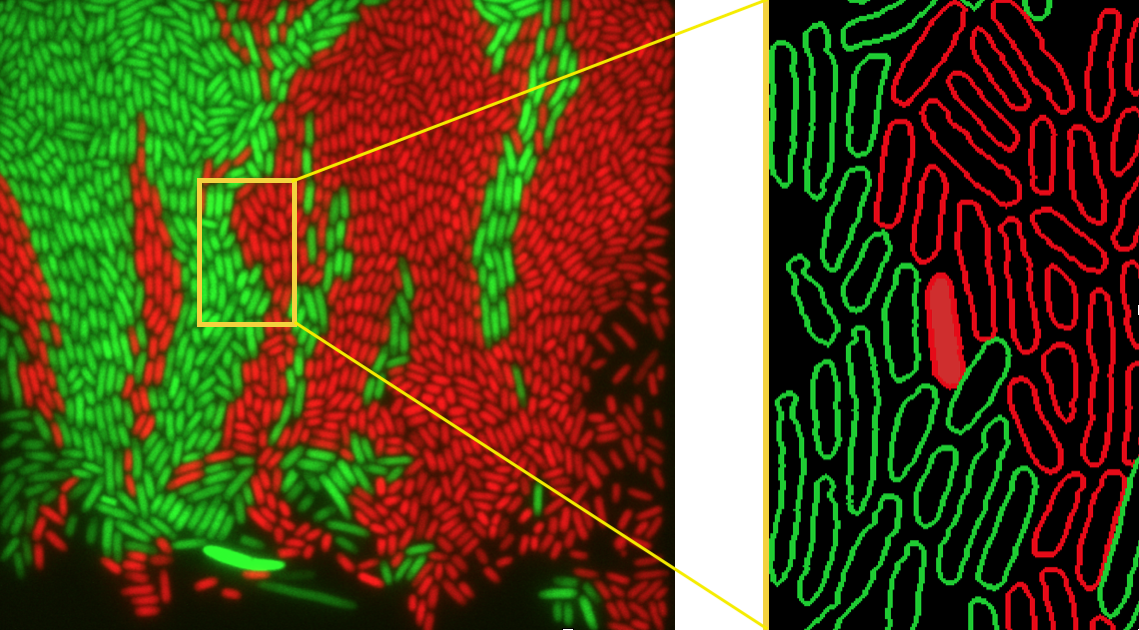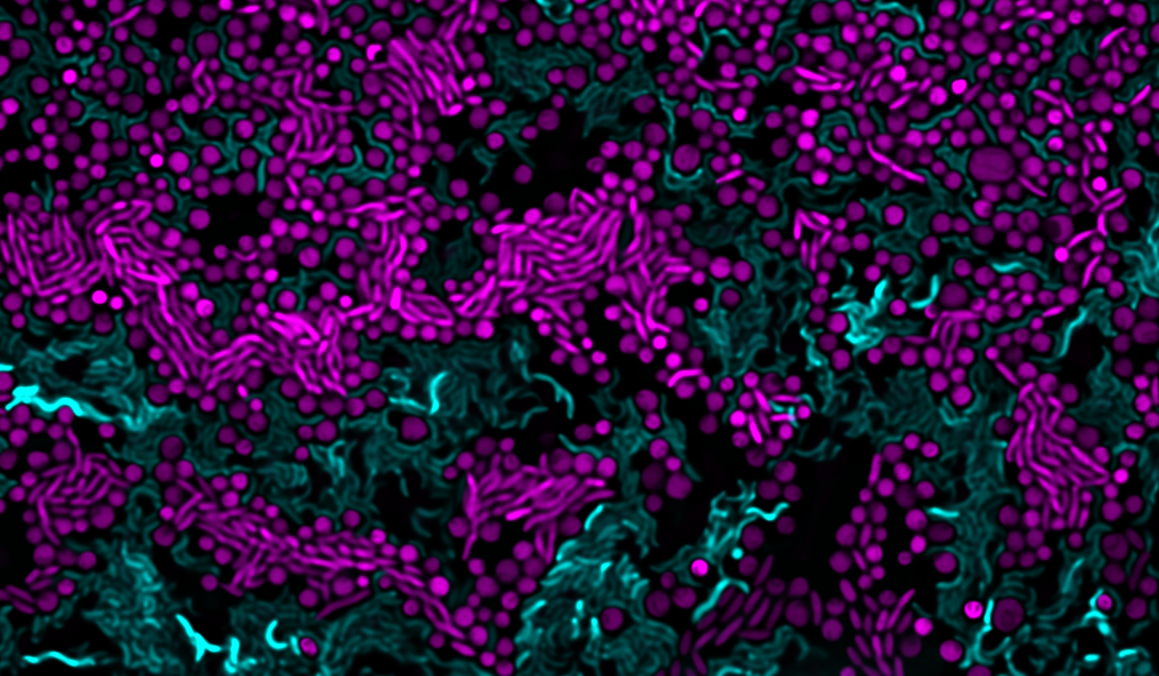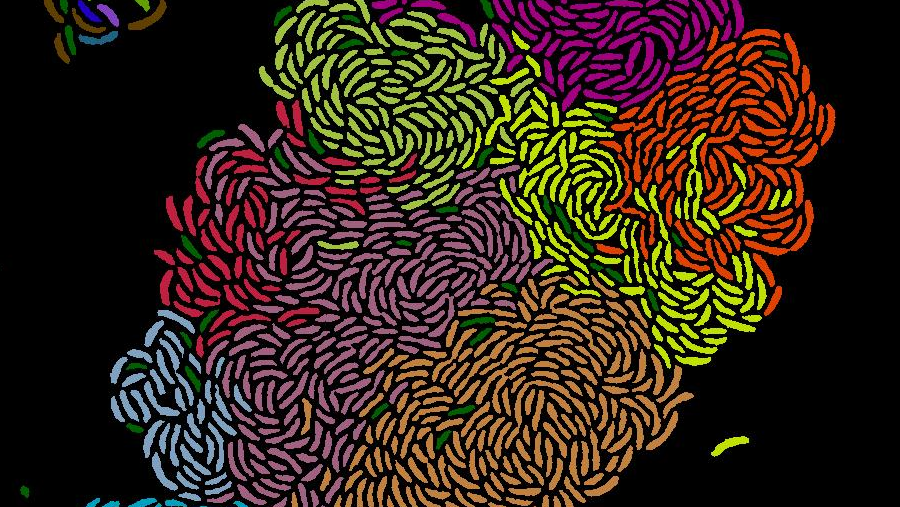Microbial Interactions at the Microscale
Microbes live in a small world where interactions between members of a community are short-ranged. To study the spatial and functional organization of microbial communities at the microscale, we we combine microfluidics with time-lapse microscopy. The resulting insights into growth rates and ecophysiology at the single-cell level allows us to understand how microbes behave and interact with each other and how they respond to changing environmental conditions.
Metabolic interactions in spatially structured microbial communities

Microbial communities exhibit complex networks of interactions, where the metabolic output of one member affects the growth of another. To better understand these networks in spatially structured communities, our research explores:
- The role of cross-feeding interactions in shaping the spatial distribution and growth dynamics of polysaccharide-degrading microbial communities (Glen, Astrid, Johannes Keegstra, external page Julia Schwartzman and others in the external page PriME collaboration)
- The evolution of cell-cell interactions in spatially structured synthetic microbial communities (Divvya)
- The role of non-growing but metabolically active members in microbial communities (Gatwa)
- The function of bacterial stalks in facilitating metabolic interactions (Miaoxiao)
- The effect of bacterial motility on the efficiency of metabolic interactions (Miaoxiao)
- Antibiotic tolerance in microbial cross-feeding communities (Guram)
Cell lysis as a strategy for nutrient acquisition

The cytoplasmic content of a cell is rich in nutrients. The lysis of a cell, therefore, releases nutrients which can be scavenged by neighbouring cells. We study the ecological significance of lysis in microbial communities and explore how:
- Some bacteria can acquire nutrients through contact-dependent killing of neighboring cells through their type VI secretion system (Astrid, Glen)
- Phage-induced lysis promotes the growth of a bacterial population when nutrients are scarce (Emanuele)
Group behavior and collective nutrient breakdown

Nutrients in the environment are often found in the form of complex polymers which must be degraded before they can be assimilated by bacteria. Because this happens extracellularly, this task is often carried out collectively. We investigate how:
- The impact of nutrient complexity affects group and solitary behavior in bacterial populations (Glen, Astrid, Johannes Keegstra, external page Julia Schwartzman)
- The experimental evolution of aggregation increases intercellular synergy in bacterial populations (Glen, Astrid)